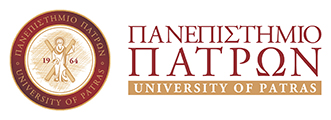Co-ordinator: George Panayiotakis
Lecturers:
Lena Costaridou, Harry Delis, Christina Kalogeropoulou, Nektarios Kalyvas, Panagiotis Liaparinos, George Panayiotakis, Spyros Skiadopoulos, Ioannis Valais, Petros Zampakis
Aim and Objectives:
The aim of this course is to provide students with a thorough understanding of the physics rules and principles that represent the basis of Medical Imaging utilizing ionizing radiation (X rays). Specifically, the physics of X ray generators and the characteristics of X ray energy spectra will be explained, as well as the physics of medical detectors. The differences between the main imaging modalities will be analyzed in terms of physical characteristics, image generation and image detection process.
Course Content:
- Introduction: X- rays- matter interactions and imaging. History of x-ray Medical Imaging.
- X-rays production: The fundamentals of x-ray production, x-ray tubes, components and operational parameters.The x- ray energy spectrum. Factors influencing x-ray spectrum and output.
- Image detectors: Analog and Digital Image Detectors. The Screen-film System and characteristics. Cassette. Direct and indirect digital detectors and characteristics. Physical Principles of image formation in Analog and Digital Imaging.
- Projection Imaging: ImagingGeometry. Geometry models. Magnification. Distortion.
- Fluoroscopy: Geometry. Image intensifier and characteristics. Cinefluorography. Digital fluoroscopy and characteristics. Low dose fluoroscopy.
- Mammography: Special requirements in breast imaging. Mammographic tubes. Breast compression.
- Computed Tomography: Cross-sectional Imaging. Conventional Tomography. CT System and Components. CT generations. Physical principles of tomographic image formation. Algorithms of image reconstruction. Image display.
- Other medical and non-medical X ray imaging modalities: Dental imaging, dual energy X -ray systems, veterinary. Industrial imaging. Synchrotron and phase imaging.
- Imaging Systems Performance and Image Quality: Linear systems theory. System transfer characteristics. PSF, LSF and MTF. MTF measurement techniques.Image quality characteristics. Image contrast, latitude, noise and signal to noise ratio. Imaging system input parameters and Image quality.
- Monte Carlo simulation: Fundamentals of systems, models and simulation. Verification, validation and accreditation. Introduction to Monte Carlo methods. Hit and miss, rejection, and transformation methods. Validation-verification errors, mean value and variance estimation-central limit theorem and variance reduction techniques. Simple applications. Pseudo random number generators basics and computer applications. Advanced generators. RANLUX, RANMAR, CLHEP and HEP. Uniform, exponential, Gaussian randoms and general function randoms generation. Simulation of coherent, incoherent, scattering and brehmstralung. Scatter and form factors, cross-sections, look-up tables and simulation techniques. Geometry description and limitations. EGSnrcMP, GATE, PENELOPE and MCNPx.
- Quality Assurance and Quality Control: Quality Assurance Framework in the Imaging Department. Acceptance and periodic Quality Control tests. Quality Control Protocols. Quality Control equipment and phantoms. Quality control measurements and tolerances. Demonstration of Quality control checks in various modalities.
Suggested Textbooks
- Bushberg J.T., Seibert J.A, Leidholdt E.M., Boone J.M. The Essential Physics of Medical Imaging, Lippincott Williams & Wilkins, Philadelphia, 2011.
- International Atomic Energy Agency. Physics of Diagnostic Radiology: A Handbook for teachers and students, IAEA, Vienna, 2014.
- Ng K.H., Wong J.H.D., Clarke G.D., Problems and Solutions in Medical Physics: Diagnostic Imaging Physics, CRC Press, Boca Raton, Florida, 2018.
- Lecture notes
Grading policy
Projects and written examinations.

